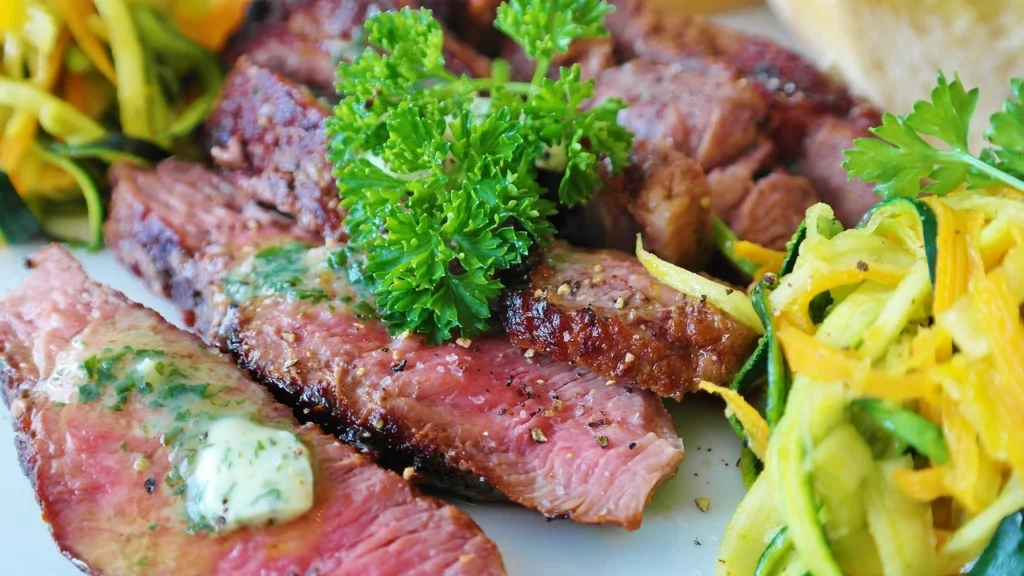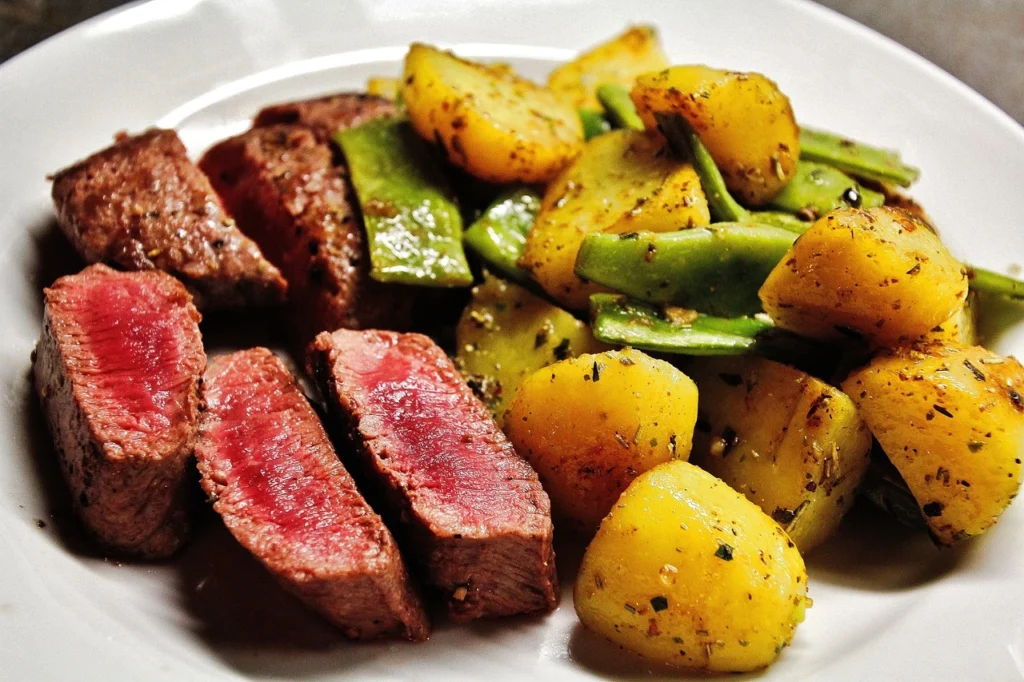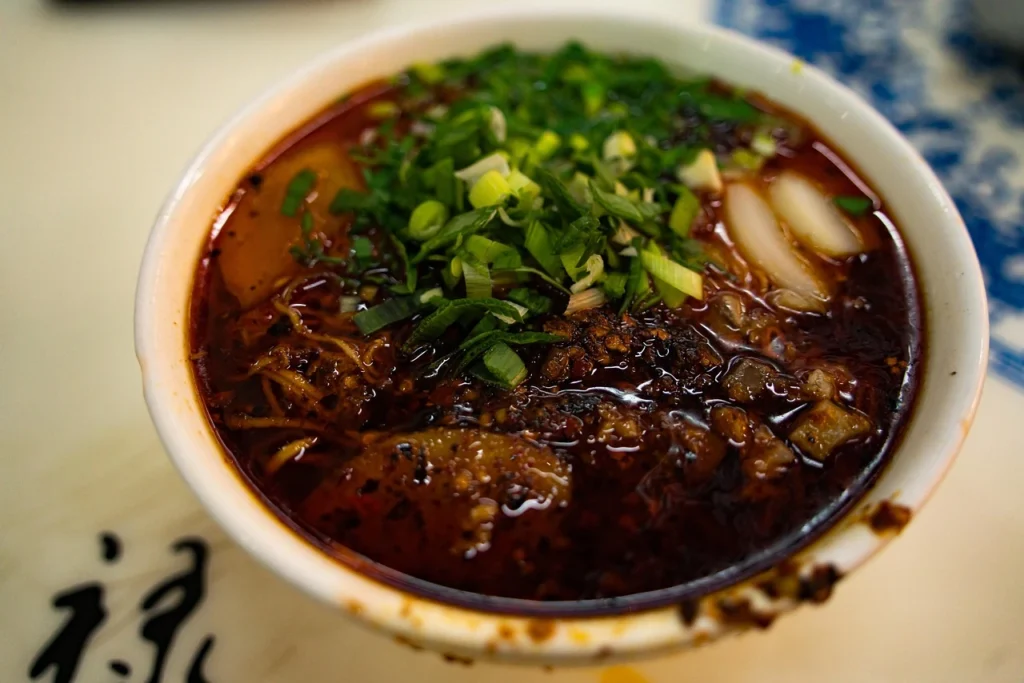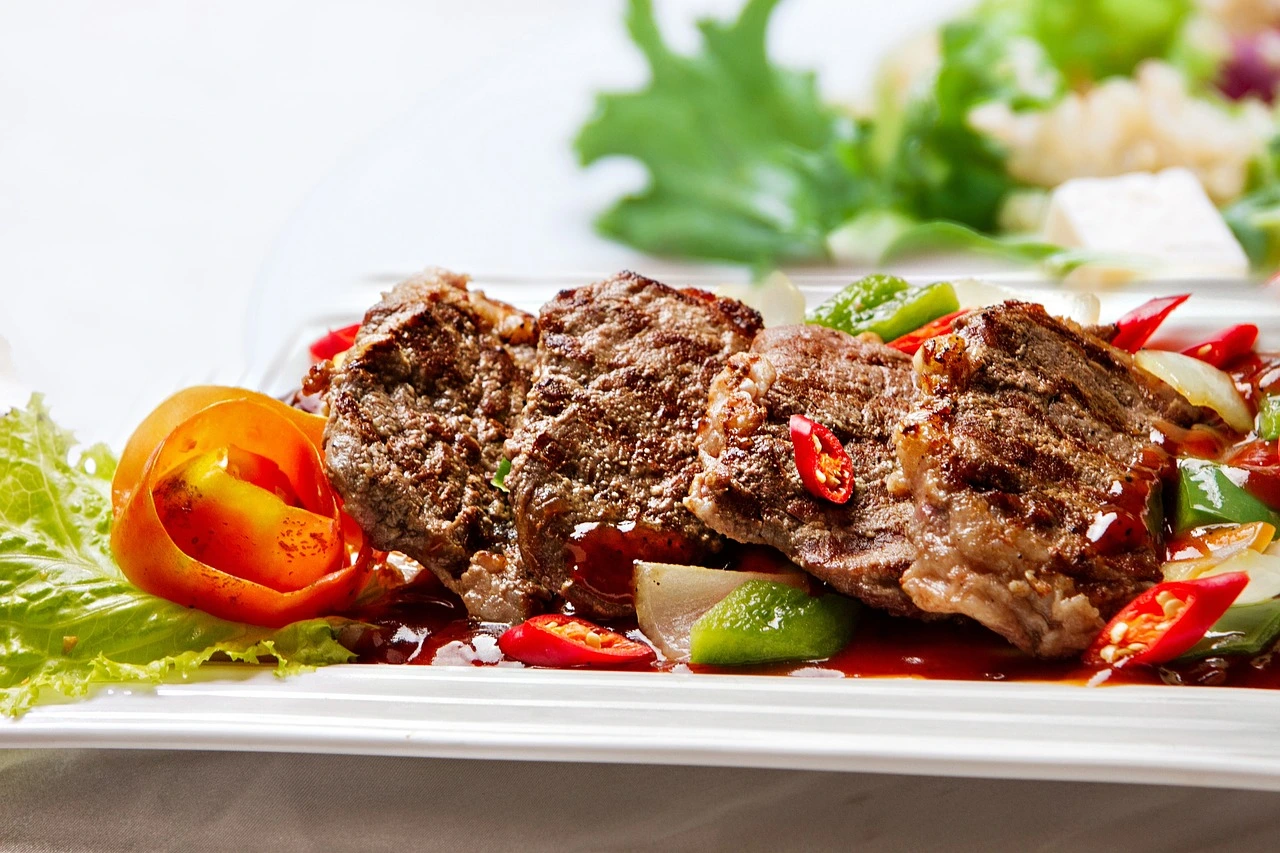The Michelin star is one of the most coveted distinctions in the culinary world, symbolizing excellence, innovation, and uncompromising quality. Originating from the Michelin Guide first published in France in the early 1900s, a Michelin star is not just an award—it’s a statement of culinary mastery. From technique and ingredient sourcing to flavor balance and presentation, every aspect of a dish is meticulously evaluated before being deemed worthy of such recognition.
Michelin-starred cuisine often evokes images of avant-garde dishes, tiny portions, and white tablecloth formality. However, many world-class chefs are increasingly embracing a return to roots—transforming traditional comfort foods into refined culinary experiences. One such example is beef stroganoff, a humble Russian classic that’s been reimagined in Michelin kitchens with luxurious twists like Wagyu beef, infused reductions, and elegant plating.
In this article, we delve into how beef stroganoff can be elevated to Michelin-star standards—unpacking everything from ingredient choices and gourmet techniques to chef-inspired plating and pairing ideas. Whether you’re a home cook aspiring to bring fine dining into your kitchen or simply fascinated by the blend of tradition and innovation, this guide will show you how comfort food can earn a star of its own.
Table of Contents
The Origins of Beef Stroganoff
Beef Stroganoff traces its origins to 19th-century Russia, where it was named after the influential Stroganov family—wealthy aristocrats known for their patronage of the arts and culture. The original dish combined sautéed beef cubes with mustard and a simple sour cream sauce, reflecting the French culinary techniques that were popular among the Russian elite at the time.
Over time, the dish evolved significantly. As it spread across Europe and eventually to the United States, variations emerged featuring ingredients like mushrooms, onions, white wine, and buttered noodles. In America, it gained fame in the mid-20th century as a hearty, family-friendly meal made with affordable cuts of beef and condensed soup.
Despite its modest modern-day associations, beef stroganoff has remained a canvas for culinary innovation. Its rich, creamy texture and savory profile make it an ideal dish for reinterpretation—allowing Michelin-starred chefs to apply technique, finesse, and premium ingredients to elevate a humble classic into fine dining territory.
What Makes a “Michelin Star” Version Different?
At first glance, beef stroganoff may seem like a simple comfort food, but when interpreted through the lens of a Michelin-starred kitchen, it becomes a masterpiece of balance, technique, and luxury. The difference begins with ingredients. In place of standard stewing cuts, chefs opt for premium selections like Wagyu tenderloin, dry-aged ribeye, or grass-fed filet mignon. Mushrooms are no longer button varieties—they’re chanterelles, morels, or truffle shavings, adding depth and earthy complexity.
Sauce preparation is equally elevated. Instead of canned broths or sour cream, chefs use homemade veal or beef stock, reduced with precision and enriched with crème fraîche, Cognac, or a white wine reduction. Dijon mustard may be infused into the sauce with aromatic herbs to create a refined tang, while the final texture is velvety and luxurious.
Presentation also sets a Michelin version apart. Rather than a heap on noodles, stroganoff is plated artfully—perhaps deconstructed, garnished with microgreens, and paired with elegantly shaped starches like truffle-infused pommes purée or saffron risotto.
In a Michelin-starred kitchen, every element—from the beef’s sear to the temperature of the sauce—is deliberate. The result? A dish that transforms nostalgia into sophistication without losing its soul.

Star Chef Takes on Beef Stroganoff
Michelin-starred chefs are known for their ability to reinterpret classic dishes with elegance and ingenuity, and beef stroganoff is no exception. Chefs like Alain Ducasse, Daniel Boulud, and Hélène Darroze have featured luxurious takes on the dish, often using premium cuts like Wagyu or dry-aged beef and layering flavors with precision.
Some elevate the humble mushroom component by incorporating wild foraged varieties or creating a concentrated mushroom duxelles. Others enrich the sauce with a splash of Cognac, a touch of foie gras, or a reduction of veal demi-glace for added richness. Even the starch base is reinvented—replacing buttered noodles with silky potato mousseline or handmade tagliatelle.
One standout interpretation features the beef cooked sous-vide for optimal tenderness, served with a foam of sour cream and truffle essence, plated with modernist flair. These chef-driven versions showcase how technique, creativity, and ingredient quality can transform comfort food into a culinary statement worthy of Michelin acclaim.
Ingredient Spotlight: Beef Cuts and Alternatives
The choice of beef is pivotal in crafting a Michelin-star-worthy stroganoff. Traditional recipes often use cuts like sirloin or rump, but fine dining demands more tender, flavorful options. Wagyu tenderloin is a popular upgrade, prized for its marbling and melt-in-your-mouth texture. Dry-aged ribeye offers a deeper, more complex flavor profile, while filet mignon provides elegance with subtle richness.
Beyond the beef, Michelin-level chefs pay close attention to supporting ingredients. Mushrooms shift from ordinary button types to earthy chanterelles, porcini, or black trumpet mushrooms. These not only elevate flavor but also add visual appeal and textural contrast.
For dietary alternatives, chefs may use venison or veal for a leaner take, or even experiment with plant-based proteins like king oyster mushrooms or seared tofu, paired with rich umami sauces. Regardless of the choice, the key lies in sourcing high-quality, fresh ingredients that contribute to a harmonious and luxurious final dish.
The Role of Sauces and Creams in Gourmet Stroganoff
In a Michelin-star rendition of beef stroganoff, the sauce isn’t just a coating—it’s the soul of the dish. Elevating it begins with a rich, homemade base: typically a deeply reduced veal or beef stock that brings intensity and body. Instead of basic sour cream, chefs often use crème fraîche, which offers a silkier texture and a more refined tang that holds up under heat.
The sauce is meticulously built in layers—starting with deglazing the pan using Cognac or dry white wine, adding aromatics like shallots, thyme, or garlic, and reducing to concentrate flavors. A hint of Dijon mustard may be incorporated to add subtle acidity and complexity.
The cream component is gently folded in at the end to prevent curdling, preserving the sauce’s smooth consistency. Finished with butter for shine or truffle oil for decadence, the result is a velvety, balanced sauce that wraps the beef in richness without overwhelming it.

Cooking Techniques for a Michelin-Star Result
In Michelin-star kitchens, technique is what transforms a good dish into an unforgettable experience. When it comes to beef stroganoff, precision in cooking methods is crucial to achieving the perfect texture, flavor, and presentation.
The journey begins with the beef. Instead of simply sautéing, many chefs use sous-vide cooking to bring the meat to an exact temperature—usually medium-rare—ensuring consistent doneness and unbeatable tenderness. Once removed from the water bath, the beef is pan-seared quickly at high heat, achieving a golden-brown crust through the Maillard reaction without overcooking the interior.
The sauce requires equal finesse. After deglazing the pan with wine or Cognac, chefs reduce the liquid to intensify the flavor before slowly incorporating crème fraîche or cream to create a smooth emulsion. Timing and temperature control are essential to avoid curdling or splitting.
Mushrooms may be sautéed separately to maintain their integrity and texture, often finished with a touch of butter and seasoning at the last moment. Even plating is a technique in itself—chefs often use ring molds, quenelles, or reduction drizzles for visual sophistication.
The attention to detail at every step is what elevates stroganoff from rustic to refined—earning its place in the world of haute cuisine.
Plating and Presentation Tips from Fine Dining
In the world of Michelin-starred dining, presentation is as important as flavor. A visually refined beef stroganoff signals sophistication before the first bite. Rather than the traditional rustic mound, chefs often opt for minimalist, structured plating—each component arranged with precision to highlight texture and color.
The beef may be sliced into medallions or artfully fanned out, with a quenelle of potato purée or a swirl of saffron-infused pasta as the starch base. Sauce is delicately spooned or drizzled around the plate, not poured over, maintaining clarity and form. Microgreens, edible flowers, or a truffle shaving offer elegant garnishes without cluttering the plate.
Using modern tableware—like black slate, asymmetrical ceramics, or polished stone—elevates the overall aesthetic. Negative space is embraced, allowing each element to stand out. The goal is to create balance and visual intrigue, turning a traditional comfort dish into a plated work of culinary art.
Pairing Recommendations
A Michelin-star version of beef stroganoff deserves equally thoughtful pairings to enhance its luxurious flavors. For wine lovers, a medium- to full-bodied red is ideal. Pinot Noir offers bright acidity and subtle earthiness that complements the richness of the cream sauce and mushrooms. For a bolder match, Cabernet Sauvignon or a Syrah pairs well with deeply seared beef and adds depth without overpowering the dish.
When it comes to side dishes, elevate beyond the ordinary. Replace egg noodles with truffle-infused mashed potatoes, parmesan risotto, or handmade tagliatelle. These options provide both texture and elegance. For a lighter pairing, a side of charred broccolini or sautéed wild greens offers contrast and freshness.
For a complete fine dining experience, consider finishing the meal with a light dessert—such as a lemon posset or panna cotta—to cleanse the palate. Every pairing should harmonize, not compete, allowing the stroganoff to shine as the star of the plate

Common Mistakes to Avoid When Elevating Stroganoff
Even the finest ingredients can’t save a stroganoff plagued by poor execution. A common mistake is overcooking the beef, which results in a tough, dry texture—especially problematic when using premium cuts like tenderloin. Another pitfall is curdling the cream by adding it too early or at too high a temperature. Always fold it in gently at the end. Avoid using store-bought broth lacking in depth; instead, opt for a homemade or high-quality reduction. Finally, don’t overwhelm the dish with too many components—balance and restraint are key in transforming stroganoff into a refined, Michelin-worthy experience.
FAQs Based on ‘People Also Ask’
Q: What is the best cut of beef for beef stroganoff?
A: For a Michelin-style version, tender cuts like Wagyu tenderloin, dry-aged ribeye, or filet mignon offer superior texture and flavor.
Q: Can beef stroganoff be a fine dining dish?
A: Absolutely. With premium ingredients, refined techniques, and elegant plating, stroganoff can be transformed into a luxury menu item.
Q: What are Michelin-starred twists on comfort food?
A: Elevating sauces with infused reductions, using wild mushrooms, or plating deconstructed versions are common chef-driven innovations.
Q: How can I make beef stroganoff taste more gourmet?
A: Use homemade stock, crème fraîche, Cognac, and sear the beef to perfection. Finish with truffle oil or foie gras for added indulgence.
Q: Is Wagyu good for stroganoff?
A: Yes—Wagyu’s marbling and tenderness make it ideal for a rich, melt-in-your-mouth stroganoff experience when handled delicately.
Final Thoughts: Bridging Comfort Food and Fine Dining
Beef stroganoff, a dish rooted in tradition and simplicity, proves that comfort food can transcend its humble origins. When crafted with intention—using premium ingredients, precise techniques, and thoughtful presentation—it becomes a showcase of culinary artistry worthy of Michelin recognition. This transformation isn’t about reinventing the wheel, but about refining each component with care. Whether you’re a home cook aiming for elegance or a chef seeking inspiration, stroganoff offers the perfect canvas to explore the intersection of nostalgia and sophistication. In the end, it’s proof that even the most familiar dishes can reach extraordinary heights.

